This article delves into the intricate timelines found in various anime series that often leave new viewers feeling perplexed. By providing clarity on notable series, their narrative structures, and effective tips for understanding convoluted plots, we aim to enhance your viewing experience.
1. Understanding Nonlinear Narratives
Nonlinear storytelling is a defining characteristic of many complex anime series. This approach can engage viewers by presenting events out of chronological order, creating suspense and intrigue. Understanding how these narratives unfold is vital for grasping the overall story arc.
2. Key Anime Series with Confusing Timelines
- Steins;Gate: Renowned for its intricate time travel elements, this series explores multiple timelines and the consequences of characters’ choices, adding layers to its narrative.
- The Melancholy of Haruhi Suzumiya: Featuring a non-linear timeline where events can be viewed in various sequences, this show challenges viewers to piece together the story from different angles.
3. The Role of Flashbacks and Foreshadowing
Flashbacks and foreshadowing are essential tools in anime storytelling. While flashbacks provide crucial character background, they can disrupt the narrative flow, potentially confusing viewers. Meanwhile, foreshadowing hints at future events, often leading to intricate plot twists that challenge comprehension.
4. Viewer Tips for Navigating Complex Timelines
- Watching Order and Episode Guides: Following the correct viewing order can significantly enhance understanding. Look for episode guides that clarify timelines.
- Utilizing Online Resources and Communities: Engaging with online forums can provide valuable insights and enhance your viewing experience.
5. The Impact of Cultural References on Timelines
Cultural references can add depth to anime narratives, often complicating timelines. Understanding Japanese culture can enrich the viewing experience and provide context that enhances comprehension.
6. Conclusion: Embracing the Complexity of Anime Timelines
In conclusion, while complex anime timelines can be challenging, they offer rich storytelling experiences. Embracing these intricacies can lead to a deeper appreciation of the art of anime.

1. Understanding Nonlinear Narratives
Understanding Nonlinear Narratives
Nonlinear storytelling is a fascinating aspect of many complex anime series, captivating audiences with its intricate and often puzzling narratives. Unlike traditional linear narratives that follow a straightforward beginning-to-end structure, nonlinear storytelling allows for a more dynamic exploration of characters and events. This approach can challenge viewers, but it also enriches the overall experience by inviting them to piece together the story in a unique way.
In nonlinear narratives, the sequence of events is often jumbled or presented out of chronological order. This technique can serve various purposes, such as creating suspense, revealing character motivations, or highlighting thematic elements. By engaging viewers in this manner, anime creators encourage active participation, prompting audiences to connect the dots and engage with the material on a deeper level.
One common technique used in nonlinear storytelling is flashbacks. These moments provide crucial context about characters’ pasts, often illuminating their current actions or decisions. However, when not executed carefully, flashbacks can disrupt the narrative flow, leaving viewers confused about the timeline. Another technique is foreshadowing, where hints about future events are subtly woven into the narrative. While effective foreshadowing can heighten suspense, it can also lead to confusion if the connections are not clear.
As viewers navigate these complex narratives, they may find themselves needing to pay close attention to details, as seemingly minor events can have significant implications later on. This layered storytelling approach not only enhances the depth of the narrative but also fosters a richer viewing experience, allowing audiences to engage with the story on multiple levels.
Ultimately, understanding nonlinear narratives in anime requires patience and an open mind. By embracing the complexity of these stories, viewers can appreciate the artistry involved in crafting such intricate plots and the emotional resonance they can evoke.
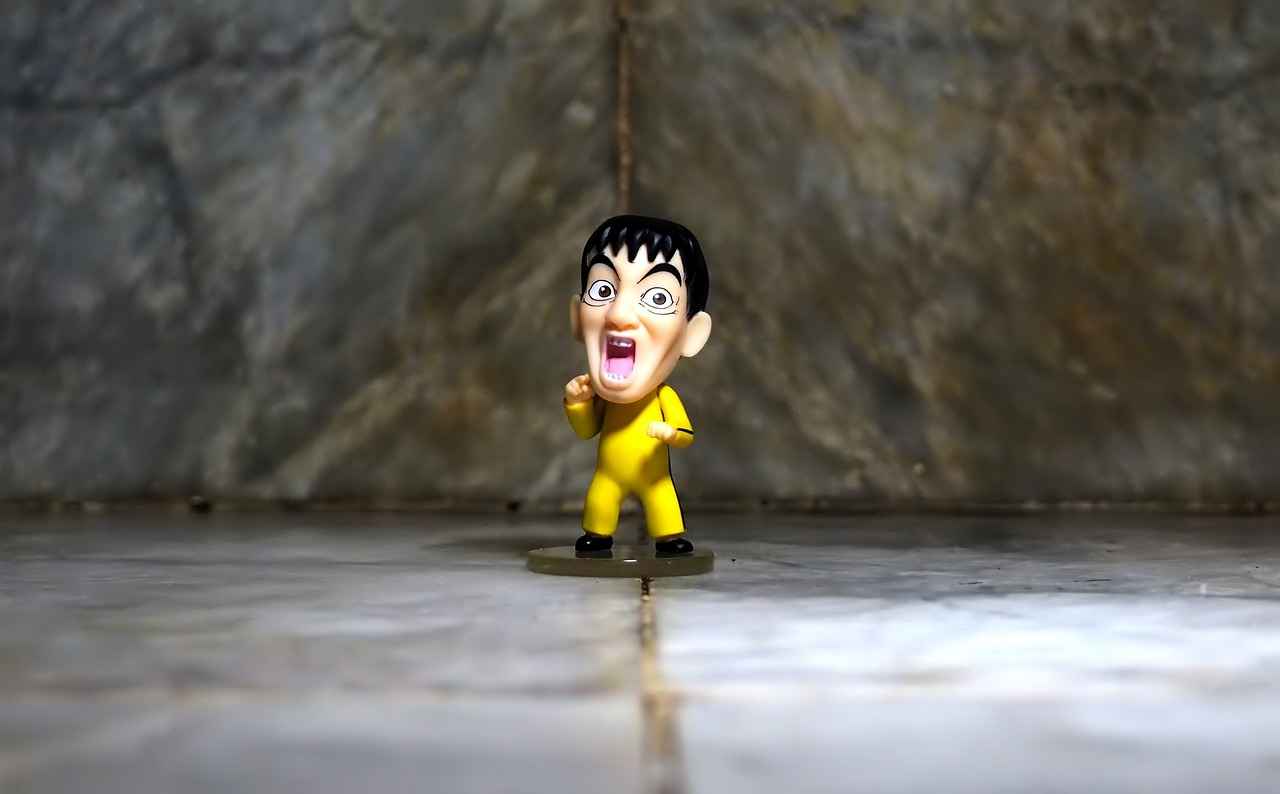
2. Key Anime Series with Confusing Timelines
The Most Complex Anime Timelines That Confuse New Viewers
This article explores intricate anime timelines that often perplex newcomers, providing clarity on notable series, their narrative structures, and tips for understanding their convoluted plots.
1. Understanding Nonlinear Narratives
Nonlinear storytelling is a hallmark of many complex anime series. These narratives unfold in a way that challenges viewers to piece together the story from various perspectives and timelines. Techniques like flashbacks, time jumps, and character-driven storytelling engage the audience and require active participation in understanding the plot.
Several anime series are notorious for their intricate timelines. Here, we highlight some of the most perplexing titles and what makes their stories challenging to follow.
- 2.1. Steins;Gate
- 2.2. The Melancholy of Haruhi Suzumiya
- 2.3. Puella Magi Madoka Magica
- 2.4. Neon Genesis Evangelion
Steins;Gate is renowned for its time travel elements. The show presents multiple timelines where characters’ choices significantly impact the narrative. Viewers must pay close attention to the consequences of each decision, which can lead to confusion but also creates a rich tapestry of interwoven stories.
This series features a non-linear timeline with events that can be viewed out of order. The disjointed structure adds depth and complexity to the viewer’s experience, as they must piece together events to grasp the overarching plot.
At first glance, this anime appears to be a typical magical girl series, but it quickly reveals a darker, more complex narrative. The timeline shifts dramatically, and the characters’ fates intertwine, making it essential for viewers to stay alert to the evolving story.
This iconic series is known for its psychological depth and ambiguous storytelling. The timeline is fragmented, with flashbacks and dream sequences that require careful analysis to understand the characters’ motivations and the overall narrative.
3. The Role of Flashbacks and Foreshadowing
Flashbacks and foreshadowing are essential tools in anime storytelling. These elements can enhance narrative depth but also complicate timelines. Flashbacks provide crucial background information about characters, while foreshadowing hints at future events, often leading to confusion.
4. Viewer Tips for Navigating Complex Timelines
For new viewers, understanding complex timelines can be daunting. Following the correct viewing order and utilizing online resources can significantly enhance understanding. Engaging with the community can also provide valuable insights into intricate narratives.
5. Conclusion: Embracing the Complexity of Anime Timelines
In conclusion, while complex anime timelines can be challenging, they offer rich storytelling experiences. Embracing these intricacies can lead to a deeper appreciation of the art of anime.
2.1. Steins;Gate
Steins;Gate stands out as a cornerstone of modern anime, particularly known for its intricate exploration of time travel. This series intricately weaves together multiple timelines, each influenced by the decisions made by its characters. The narrative complexity not only captivates audiences but also challenges them to ponder the implications of their choices.
At its core, Steins;Gate revolves around the concept of time travel and the butterfly effect, where even the smallest actions can lead to vastly different outcomes. The protagonist, Okabe Rintarou, stumbles upon a method to send messages to the past, which sets off a chain reaction of events that alters the course of reality. This leads to the creation of multiple timelines, each representing a different outcome based on the characters’ decisions.
One of the most compelling aspects of Steins;Gate is its ability to illustrate the weight of choice. For instance, the decision to save a friend or to pursue scientific knowledge often leads Okabe into morally ambiguous territories. This exploration of ethical dilemmas adds depth to the narrative, making viewers question what they would do in similar situations.
Moreover, the series employs a rich tapestry of supporting characters, each with their own backstories and motivations that intertwine with Okabe’s journey. The interactions among these characters further complicate the timeline, as their choices also have significant repercussions. As viewers navigate through the various timelines, they witness how interconnected lives can influence one another in profound ways.
In conclusion, Steins;Gate is not just a tale of time travel; it is a profound commentary on the nature of choice and consequence. The complexity of its timelines serves as a reminder that every decision, no matter how small, can lead to unexpected and far-reaching effects. This thematic depth, combined with a captivating plot, solidifies Steins;Gate as a must-watch for any anime enthusiast.
2.2. The Melancholy of Haruhi Suzumiya
The Melancholy of Haruhi Suzumiya is a fascinating anime series that has captivated audiences with its unique narrative structure. This series features a non-linear timeline where events can be viewed out of order, creating a rich tapestry of storytelling that challenges and engages viewers.
One of the most intriguing aspects of this series is how it employs a non-linear approach to storytelling. By presenting events out of sequence, the show invites viewers to piece together the narrative like a puzzle. This technique not only adds depth but also enhances the complexity of the viewer’s experience. As the story unfolds, viewers are encouraged to make connections between seemingly unrelated events, which can lead to a more profound understanding of the characters and their motivations.
The series revolves around Haruhi Suzumiya, a high school girl with the ability to alter reality. Her eccentric personality and unpredictable behavior drive the plot, as her friends navigate the chaos she creates. The non-linear timeline mirrors Haruhi’s erratic nature, making the viewing experience both exhilarating and bewildering.
- Character Development: The non-linear storytelling allows for deeper character exploration. Flashbacks reveal vital information about the characters’ pasts, enriching their development and adding layers to the overall narrative.
- Plot Twists: The out-of-order presentation keeps viewers on their toes, as unexpected twists can arise at any moment. This unpredictability heightens the emotional stakes and encourages viewers to stay engaged.
- Viewer Engagement: By challenging viewers to actively piece together the timeline, the series fosters a sense of involvement. This engagement can lead to discussions and analyses among fans, enhancing the community experience.
In conclusion, The Melancholy of Haruhi Suzumiya exemplifies how a non-linear timeline can enrich storytelling in anime. By intertwining events and encouraging viewers to engage with the narrative actively, the series offers a unique and rewarding viewing experience that stands out in the world of anime.
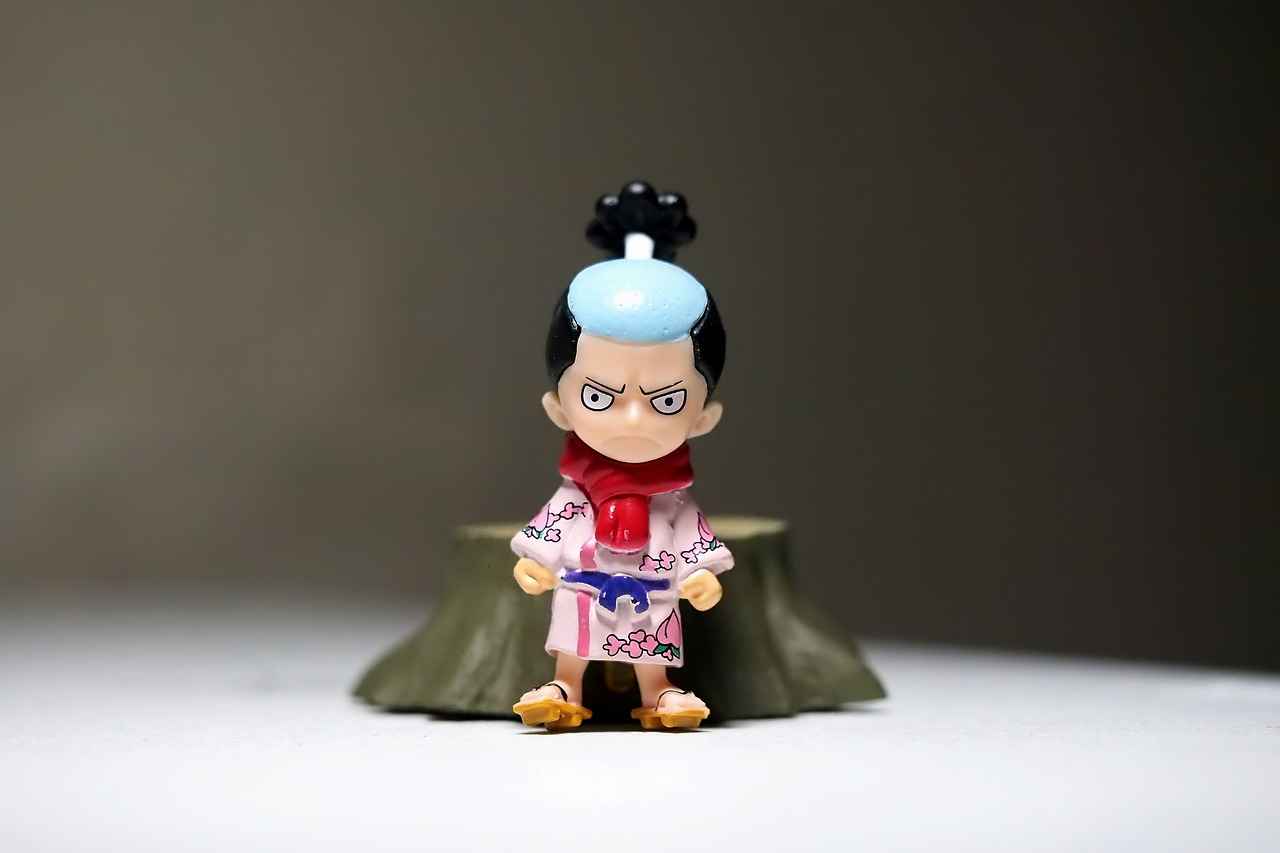
3. The Role of Flashbacks and Foreshadowing
Flashbacks and foreshadowing are vital narrative devices in anime that play a significant role in shaping the story and enhancing viewer engagement. These elements not only contribute to the complexity of timelines but also deepen the emotional resonance of the narrative.
In many anime series, flashbacks serve as a crucial tool for character development. They provide viewers with essential background information, revealing past events that shape a character’s motivations and decisions. For instance, a character’s traumatic childhood may be unveiled through a series of flashbacks, allowing the audience to empathize with their struggles. However, this technique can also lead to confusion, especially when flashbacks disrupt the main storyline. Viewers may find themselves piecing together timelines, trying to understand how these past events influence the present.
Foreshadowing, on the other hand, is a narrative device that hints at future events. It creates suspense and anticipation, encouraging viewers to pay close attention to seemingly minor details. For example, a seemingly innocuous conversation or a fleeting image may foreshadow a significant plot twist later in the series. While effective foreshadowing enriches the storytelling experience, it can also leave viewers puzzled, especially if the connections are not immediately clear. This complexity often leads to multiple interpretations, prompting discussions among fans about hidden meanings and potential outcomes.
Ultimately, the interplay between flashbacks and foreshadowing adds layers to anime narratives. These elements challenge viewers to engage actively with the story, piecing together timelines and uncovering the intricate web of connections that define the characters’ journeys. As such, understanding how these narrative tools work can greatly enhance one’s appreciation of anime storytelling.
In conclusion, flashbacks and foreshadowing are not merely plot devices; they are essential components that contribute to the depth and complexity of anime narratives. By exploring these elements, viewers can gain a richer understanding of the stories being told and the characters that inhabit them.
3.1. Flashbacks in Character Development
Flashbacks are a powerful narrative device in anime, serving as a window into the past experiences and motivations of characters. They not only enrich character development but also provide essential context that can enhance the viewer’s understanding of the storyline. However, when not executed carefully, these moments can lead to confusion, especially for new viewers trying to piece together the timeline of events.
In many anime series, flashbacks reveal pivotal moments that shape a character’s personality, decisions, and relationships. For instance, a character’s traumatic past may explain their current behavior, making the audience empathize with their struggles. This depth adds layers to the narrative, making it more engaging. Yet, when these flashbacks interrupt the flow of the main plot, they can disorient viewers, causing them to lose track of the present storyline.
| Advantages of Flashbacks | Potential Drawbacks |
|---|---|
| Enhances Character Depth: Provides insight into motivations. | Disruption of Flow: Can confuse viewers if poorly timed. |
| Builds Emotional Connections: Helps viewers empathize. | Overuse: May lead to narrative clutter. |
| Contextualizes Events: Clarifies character decisions. | Loss of Momentum: Can slow down pacing. |
To mitigate confusion, creators often use visual cues or distinct transitions that signal a shift to a flashback. This technique helps orient viewers, allowing them to adjust their focus and absorb the backstory without losing track of the main plot. Moreover, well-placed flashbacks can serve as effective foreshadowing, hinting at future developments and keeping the audience engaged.
In conclusion, while flashbacks are essential for character development in anime, their implementation must be handled with care. By striking a balance between revealing character backstories and maintaining narrative coherence, creators can enhance the viewing experience and ensure that audiences remain captivated by the unfolding drama.
3.2. Foreshadowing as a Narrative Device
Foreshadowing is a powerful narrative device that serves as a subtle hint towards future events in a story. In the realm of anime, this technique is often employed to create suspense and intrigue, leading viewers to anticipate twists and turns in the plot. While effective foreshadowing can enhance storytelling, it can also lead to confusion if not executed carefully.
When foreshadowing is utilized effectively, it can intricately weave together various plot elements, creating a rich tapestry of narrative depth. For instance, in series like Steins;Gate, viewers are introduced to seemingly innocuous details that later reveal their significance in unexpected ways. This not only challenges the viewer’s comprehension but also encourages them to re-evaluate earlier episodes, searching for clues that they may have missed.
However, the complexity of foreshadowing can sometimes backfire. If the hints are too subtle or if they lead to an outcome that feels unearned, viewers may feel frustrated rather than satisfied. This is particularly true in anime with nonlinear timelines, where the sequence of events can obscure the connections between foreshadowed elements and their eventual payoffs. For example, in The Melancholy of Haruhi Suzumiya, the non-chronological presentation of events can leave viewers puzzled about the significance of certain moments until much later in the series.
To navigate this complexity, viewers can benefit from re-watching episodes or seeking out discussions in online communities. Engaging with fellow fans can illuminate different interpretations of foreshadowing, revealing how various elements fit together in the larger narrative. Ultimately, while foreshadowing can create intricate plot twists that challenge comprehension, it also enriches the viewing experience, inviting audiences to delve deeper into the story.
| Key Points | Description |
|---|---|
| Definition | Foreshadowing hints at future events in a narrative. |
| Effectiveness | Can enhance suspense and depth in storytelling. |
| Challenges | May lead to confusion if hints are too subtle or complex. |
| Viewer Engagement | Re-watching and community discussions can help clarify meanings. |
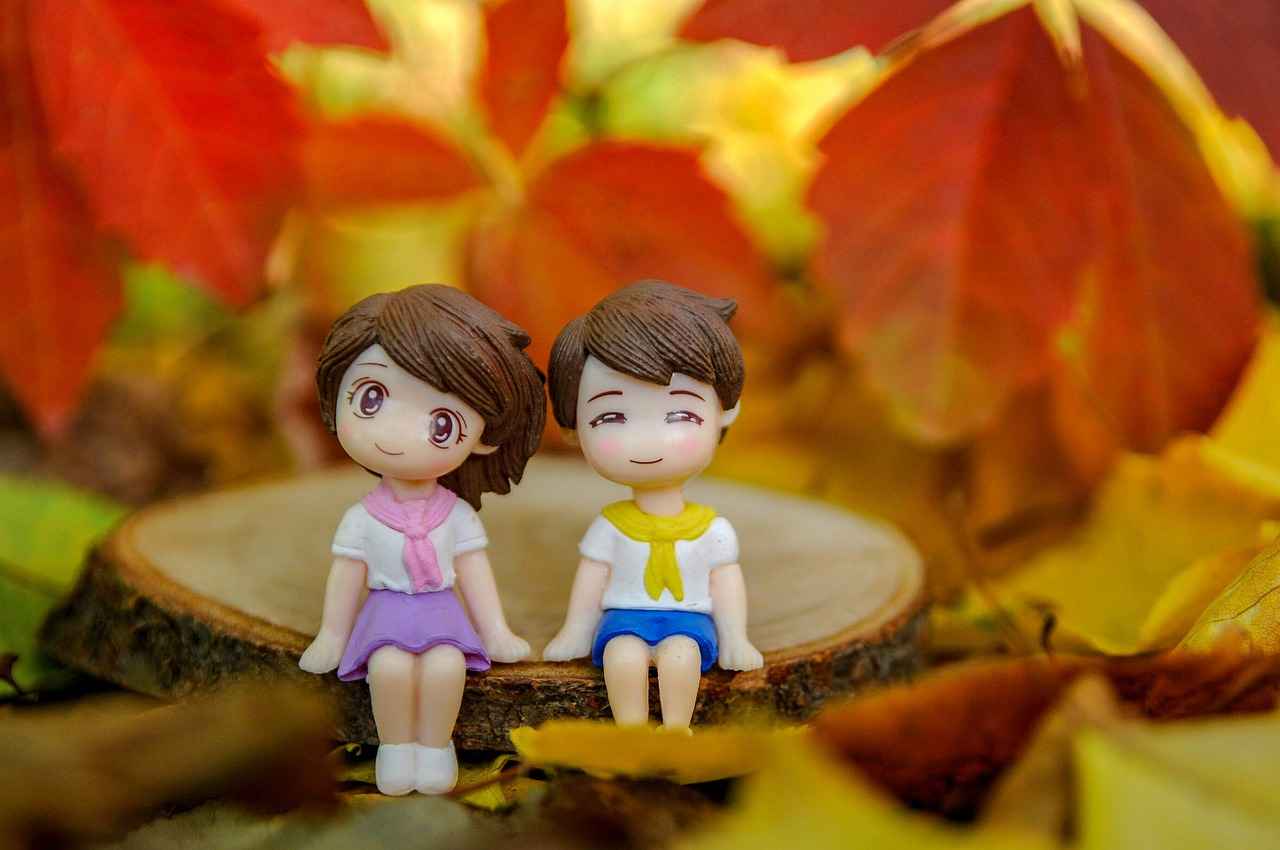
4. Viewer Tips for Navigating Complex Timelines
Navigating complex anime timelines can be a daunting task for new viewers. With intricate narratives and nonlinear storytelling, it’s easy to feel overwhelmed. However, with the right strategies and tools, anyone can enhance their understanding and enjoyment of these captivating stories. Below are some practical tips designed to help you navigate through these complex timelines with ease.
- 1. Follow a Recommended Viewing Order: Many anime series have specific viewing orders that can clarify the timeline. Steins;Gate, for example, benefits from following the chronological order of episodes rather than the release order. Always check online guides to find the best sequence.
- 2. Utilize Episode Summaries: Before diving into a new episode, reading a brief summary can provide context. Websites like MyAnimeList and AniList often have user-generated summaries that highlight key plot points and character developments.
- 3. Engage with Online Communities: Forums and social media groups dedicated to anime can be invaluable resources. Platforms like Reddit and Discord host discussions where fans share insights, theories, and clarifications about complex plots.
- 4. Take Notes: Jotting down key events, character relationships, and timelines can help you keep track of the narrative. This method is particularly useful for series with multiple timelines or flashbacks.
- 5. Rewatch Key Episodes: Sometimes, rewatching certain episodes can provide clarity. Pay attention to details you may have missed the first time, especially in series like The Melancholy of Haruhi Suzumiya, where events are presented out of order.
- 6. Explore Supplemental Materials: Many anime come with additional materials, such as manga adaptations, light novels, or official guides. These can offer deeper insights into the story and help you understand the timeline better.
By applying these tips, new viewers can significantly enhance their understanding of complex anime timelines. With patience and practice, you’ll find that the beauty of these narratives becomes more accessible and enjoyable.
4.1. Watching Order and Episode Guides
When diving into the world of complex anime, the watching order can be crucial for enhancing your understanding of the story. Following the correct sequence not only clarifies timelines but also enriches your viewing experience, allowing you to appreciate character development and plot twists more fully.
Many anime series present their narratives in a non-linear fashion, making it essential to know the recommended viewing order. Here are some key tips to help you navigate these intricate timelines:
- Research Official Guides: Many anime series have official episode guides or recommended viewing orders published by the creators or fan communities. These resources can provide clarity on how to approach the series.
- Utilize Streaming Platforms: Platforms like Crunchyroll or Funimation often provide episode lists that can help you follow the intended viewing order. Pay attention to any special episodes or OVAs that may be crucial for understanding the plot.
- Check Community Recommendations: Engaging with online communities, such as Reddit or anime forums, can yield valuable insights. Experienced fans often share their recommended viewing sequences that enhance comprehension.
- Watch Chronologically: For series with complex timelines, consider watching episodes in chronological order if the narrative allows for it. This approach can help you piece together the story more coherently.
In conclusion, following the correct viewing order is not just a matter of keeping track of episodes; it is a vital strategy that can significantly enhance your understanding of complex anime narratives. By utilizing available resources and engaging with the community, you can navigate these intricate timelines with greater ease and enjoyment.
4.2. Utilizing Online Resources and Communities
Utilizing Online Resources and Communities
In the age of digital connectivity, online forums and resources have become essential tools for anime enthusiasts, especially when it comes to understanding complex plots and timelines. Engaging with a community of like-minded viewers can significantly enhance your viewing experience and provide clarity on intricate narratives.
One of the primary benefits of participating in online forums is the opportunity to exchange ideas and insights with fellow fans. These platforms allow viewers to share their interpretations, discuss plot points, and even debate character motivations. This communal aspect fosters a deeper understanding of the material, as different perspectives can illuminate aspects of the story that may have been overlooked.
Additionally, many forums host episode discussions where fans dissect each installment in real-time. This can be particularly valuable for series with nonlinear timelines, as viewers can track the progression of events and how they relate to one another. Engaging in these discussions helps to solidify one’s understanding of the series and can even reveal hidden meanings or foreshadowing that may not be immediately apparent.
Moreover, online resources such as wikis and dedicated fan sites provide comprehensive guides and analyses. These resources often include timelines, character maps, and summaries that can aid in navigating complex narratives. For instance, a well-maintained wiki can offer detailed explanations of how various plot threads intertwine, making it easier for newcomers to grasp the overarching story.
In conclusion, immersing yourself in online communities and utilizing available resources can significantly enhance your understanding of complex anime timelines. By engaging with others, sharing insights, and accessing detailed analyses, you can transform a potentially confusing viewing experience into a rewarding journey of discovery.
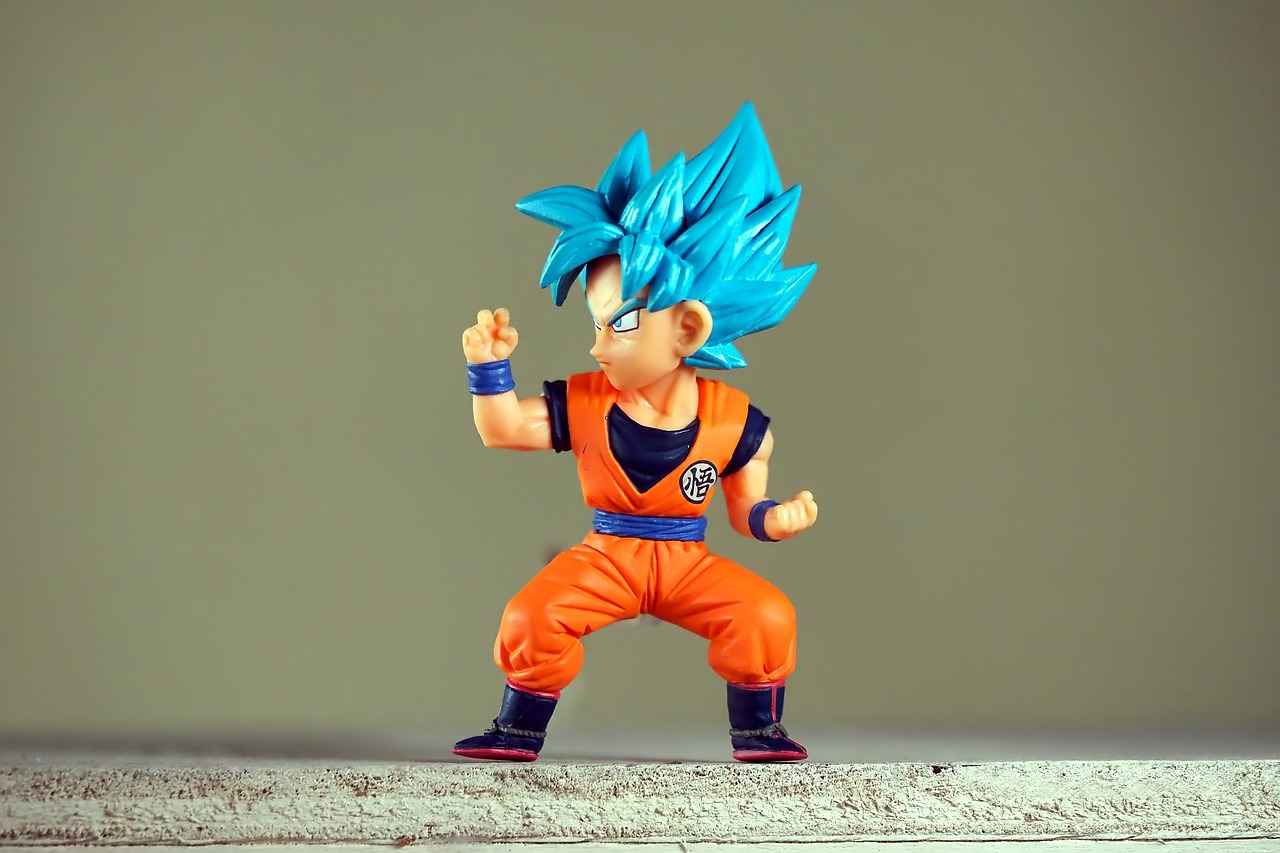
5. The Impact of Cultural References on Timelines
The Impact of Cultural References on Timelines
Cultural references in anime serve as a bridge between the narrative and the viewer’s understanding, often adding layers of meaning that can complicate timelines. These references may range from historical events, traditional practices, to popular media, and they can significantly influence how a story is perceived and interpreted.
When anime creators incorporate cultural elements, they enrich the narrative by embedding familiar concepts that resonate with the audience. However, for viewers unfamiliar with these references, the timeline can become convoluted, leading to confusion. This section will explore how these cultural nuances affect both viewer comprehension and the overall narrative structure.
- 5.1. Japanese Cultural Context in Storytelling
Understanding the Japanese cultural context is crucial for grasping the complexities within many anime series. For instance, references to Shinto beliefs or historical events can provide depth to character motivations and plot developments. These cultural insights often require viewers to have a background knowledge that may not be readily accessible to international audiences, complicating their understanding of the timeline.
- 5.2. Global Reception and Interpretation
The way international audiences interpret cultural references can vary widely. Some viewers may miss out on crucial narrative elements due to differing cultural experiences. This disparity can lead to misunderstandings of character actions or plot points, which are often deeply rooted in Japanese culture. As a result, timelines may appear more intricate and challenging to follow for those who lack this cultural awareness.
In conclusion, while cultural references can enhance the richness of anime narratives, they also present challenges for viewer comprehension. Understanding these references is essential for navigating the often complex timelines that define many beloved series.
5.1. Japanese Cultural Context in Storytelling
Japanese culture is rich and diverse, deeply influencing various forms of storytelling, including anime. Understanding this cultural context is crucial for viewers seeking to navigate the often intricate timelines found in many series. The nuances of Japanese society, traditions, and values are intricately woven into the narratives, adding layers of meaning that enhance the viewing experience.
One significant aspect of Japanese culture is the concept of wa, or harmony, which often manifests in character interactions and relationships. This principle can lead to complex social dynamics that are not immediately clear to viewers unfamiliar with these cultural norms. For instance, characters may prioritize group harmony over individual desires, affecting their decisions and the overall plot trajectory.
Additionally, the use of mythology and folklore in anime often reflects a deep-rooted connection to Japan’s history and spiritual beliefs. Many series incorporate elements from Shinto and Buddhist traditions, which can introduce themes of reincarnation, fate, and the cyclical nature of time. These themes may contribute to a non-linear narrative style, as seen in series like Steins;Gate and The Melancholy of Haruhi Suzumiya, where timelines are manipulated to reflect these cultural ideas.
Moreover, cultural references, such as traditional festivals or historical events, can create additional layers of complexity. For example, a scene set during a specific festival may carry significance that resonates with Japanese audiences but might be lost on international viewers. This cultural context can lead to confusion when timelines are presented in a non-linear fashion, as viewers may struggle to connect the dots without an understanding of the underlying cultural references.
To fully appreciate these intricate narratives, viewers are encouraged to explore the cultural context behind the stories. Engaging with resources that explain Japanese traditions, societal norms, and historical events can significantly enhance understanding and enjoyment of anime.
In conclusion, the Japanese cultural context plays a pivotal role in shaping the storytelling techniques used in anime. By recognizing and appreciating these cultural nuances, viewers can enrich their experience and gain a deeper understanding of the complex timelines that define many beloved series.
5.2. Global Reception and Interpretation
Global Reception and Interpretation
The way international audiences interpret cultural references in anime can vary significantly based on their own cultural backgrounds and societal norms. This section delves into the implications of cultural context on the understanding of timelines in anime narratives.
In many instances, cultural references serve as a bridge between the narrative and the viewer’s understanding. For example, a specific Japanese festival depicted in an anime may resonate deeply with Japanese viewers who have experienced it, while international audiences might find it perplexing without prior knowledge. This discrepancy can lead to varied interpretations of pivotal plot points that hinge on these cultural elements.
Moreover, the nuances of language play a critical role. Certain phrases or idiomatic expressions may carry meanings that are lost in translation, affecting how viewers perceive character motivations and story arcs. For instance, a character’s expression of nostalgia tied to a cultural event may not evoke the same emotional response from a viewer unfamiliar with that context.
| Cultural Reference | Impact on Understanding |
|---|---|
| Japanese Festivals | Enhances connection for local viewers; may confuse international audiences |
| Traditional Folklore | Deepens narrative for those familiar; requires additional context for others |
| Language Nuances | Can alter character perception; may lead to misinterpretations |
Furthermore, the global reception of anime often reflects broader cultural trends and values. For instance, themes of friendship and perseverance resonate universally, yet their portrayal can differ based on cultural expectations. As a result, while some viewers may appreciate a character’s journey as a representation of personal growth, others might interpret it as a reflection of societal pressures.
In conclusion, the intersection of cultural references and anime timelines is complex and multifaceted. Understanding these elements can significantly enhance the viewing experience, allowing audiences to appreciate the depth of storytelling that anime offers.
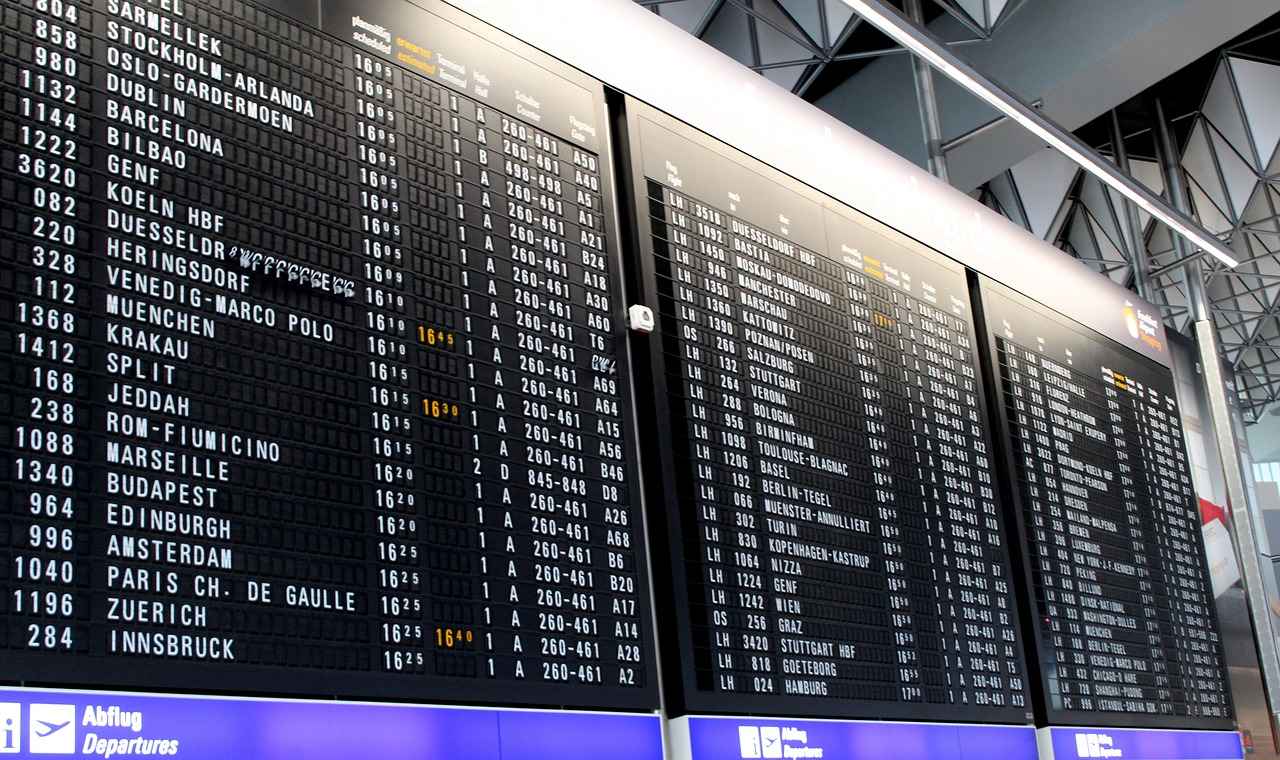
6. Conclusion: Embracing the Complexity of Anime Timelines
In the realm of anime, complex timelines present both a challenge and an opportunity for viewers. As we navigate through the intricate narratives, we often find ourselves immersed in a world where time is fluid, and events unfold in unexpected ways. This complexity can initially be daunting, especially for newcomers who may feel overwhelmed by the nonlinear storytelling approaches used in various series. However, embracing these complexities can lead to a richer understanding and appreciation of the medium.
Many anime series are crafted with meticulous attention to their timelines, where every event is interwoven to create a tapestry of storytelling that is both engaging and thought-provoking. For instance, shows like Steins;Gate and The Melancholy of Haruhi Suzumiya challenge viewers to piece together narratives that may not follow a traditional chronological order. This requires not only active engagement but also a willingness to embrace the confusion that comes with it.
Moreover, the use of flashbacks and foreshadowing adds layers to these narratives, enriching character development and plot depth. While these elements can sometimes disrupt the flow of the main storyline, they also serve as crucial tools that enhance the overall experience. Understanding their role can help viewers appreciate the artistry behind the storytelling.
Ultimately, the journey through complex anime timelines can be incredibly rewarding. By adopting strategies such as following recommended viewing orders and engaging with online communities, viewers can demystify these intricate plots. In doing so, they open themselves up to a whole new world of creative storytelling, leading to a deeper appreciation of anime as an art form.
In conclusion, while the paths through complex anime timelines may twist and turn, they also offer a unique narrative experience that can profoundly impact viewers. By embracing these intricacies, one can discover the true beauty of anime storytelling.
